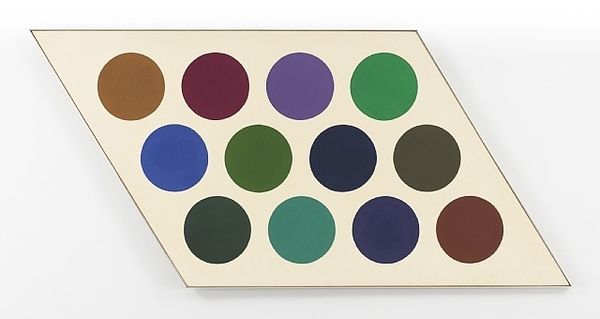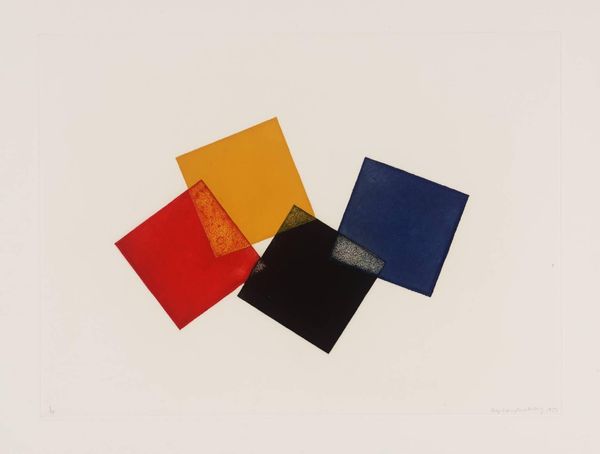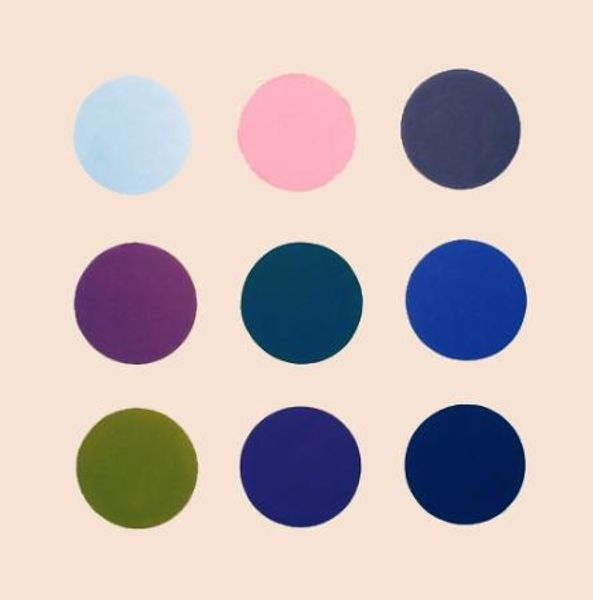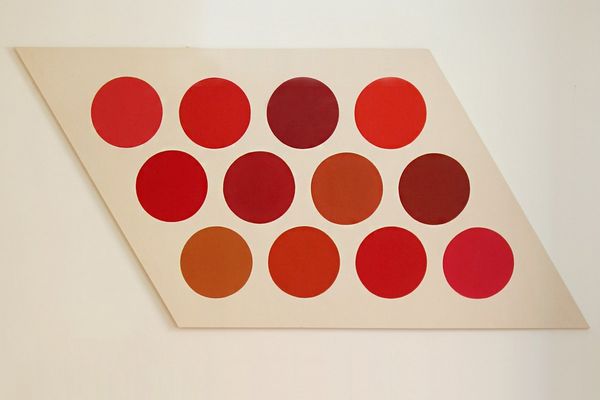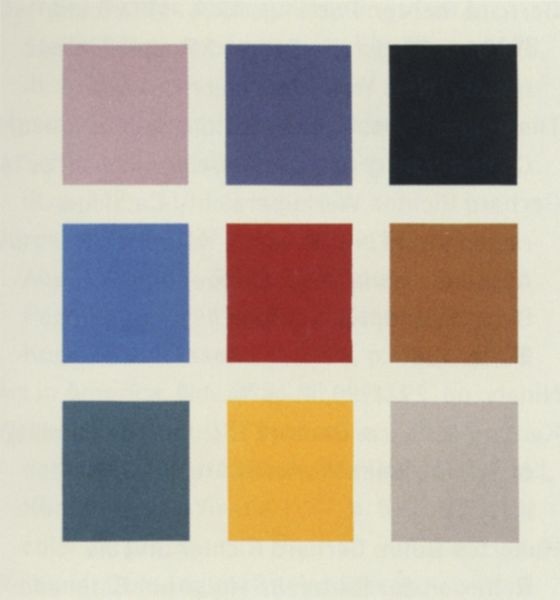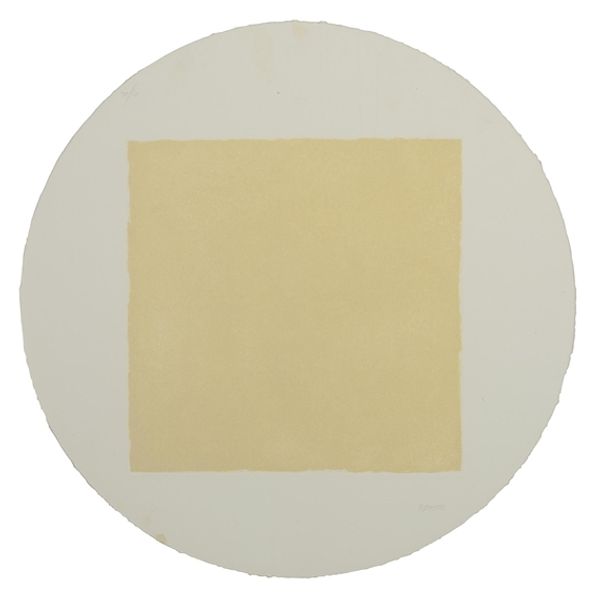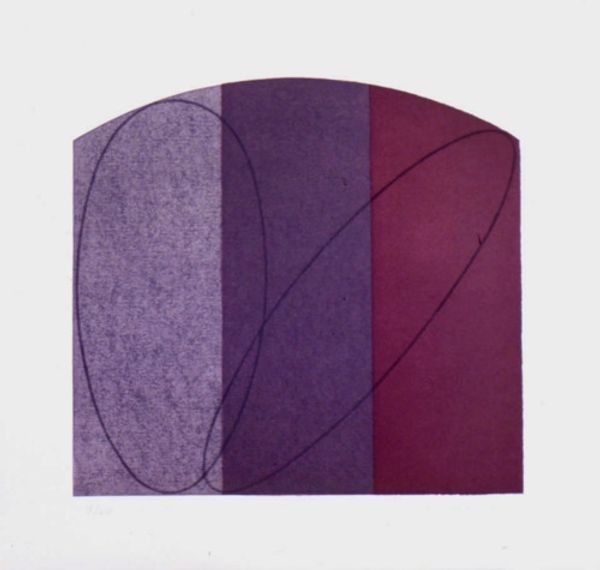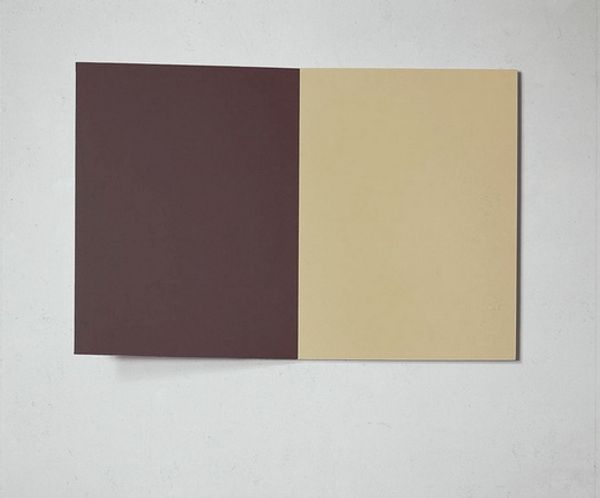
acrylic-paint
#
popart
#
minimalism
#
circle
#
pattern
#
geometric composition
#
pop art
#
colour-field-painting
#
acrylic-paint
#
geometric
#
abstraction
#
modernism
#
hard-edge-painting
#
monochrome
Copyright: (c) Ellsworth Kelly, all rights reserved
Editor: Ellsworth Kelly’s "Nine Colors," from 1951. It's a striking piece: nine monochrome circles, each a different color, arranged in a grid against a black background. The circles feel almost like distinct personalities; what's your interpretation? Curator: This work represents a pivotal moment, revealing the cultural influences shaping abstraction in postwar America. The hard-edged geometries align Kelly with a broader exploration of pure form, separating color from representational burden. This piece asks us to consider what constitutes 'content' in art and who determines its value? Is it merely decorative, or is there something more at play given that he developed this piece after serving in World War II? Editor: So, it's less about *what* is depicted and more about *how* it's depicted, and even *why* now. The colors are quite flat...are those deliberate and speak to Minimalism somehow? Curator: Absolutely, it’s the deliberate removal of personal gesture, pushing towards universality but it also reflects institutional shifts. Museums at the time embraced abstract art as a sign of American innovation and freedom. In doing so, do we reinforce certain power structures and aesthetic values at the expense of other art forms? Do we see his aesthetic reflected in design/marketing around that time? Editor: It’s amazing how such a simple composition can carry such weight. I'm getting a glimpse of the power dynamics in the art world. Curator: And how a piece of art engages – or perhaps even challenges – its time. That's how cultural values get made.
Comments
No comments
Be the first to comment and join the conversation on the ultimate creative platform.
